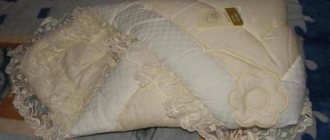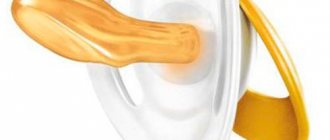What does a sippy cup look like?
- It is a mug that is covered with a lid with a special spout, in which there is a small hole necessary to ensure that the liquid does not leak out or splash.
- This training cup helps your baby learn to coordinate hand movements and quickly bring it to his mouth.
- In addition, he will feel independent and grown up.
Types of sippy cups
To choose the best sippy cup for children, you need to navigate its varieties. They are as follows:
- teaching;
- classic;
- sippy cups;
- with a straw;
- thermal drinker;
- with two spouts.
Educational sippy cups are suitable for children under six months of age. They have handles, two attachments: one with a nipple, the other with a spout. At the beginning of training, the child drinks from a pacifier, and then gradually tries to drink from a spout. This is only for artificial children.
Important! If your child is breastfeeding, then you do not need such a sippy cup.
Classic models have two handles and a lid with a spout.
Please note that this product is only suitable for home use. Since it can tip over, causing liquid to spill out, it is inconvenient to take on a trip or for a walk.
Such a vessel can be bought for those children who know how to hold a cup and not spill drinks. This is approximately 9–10 months of age.
But sippy cup with handles is just perfect for taking on walks or trips with you. For example, the munchkin sippy cup has handles, a tight-fitting valve, and a leak-proof lid. So, it’s not scary to drop it, liquid won’t leak out of it.
These sippy cups for children can be used from 6 months. This is the time to start complementary feeding
A children's sippy cup with a straw is indispensable for those who refuse to accept the classic model or mug and prefer only bottles. This vessel is intended for children over 8 months.
The disadvantage of a sippy cup with a straw is that the straw is difficult to rinse and traces of compote or milk remain inside it. This may lead to bacterial growth. Then just change the straw as often as possible.
The thermopoiler is a vessel made of double walls.
It is able to maintain the required temperature of the liquid in it for 4-5 hours. It is convenient for walks or trips in the cold season.
It can be heated in the microwave.
These sippy cups also have lids and valves, which will protect against liquid spillage. But handles are missing on many models of this type.
In addition, there are sippy cups with either one handle or two. Some manufacturers make them with anatomical curves to make it comfortable for the child to hold on to.
Here are some more interesting options:
- There are sippy cups that have a collapsible spout .
- And even more interesting are those vessels that have a valve that regulates the flow of liquid from slow to fast.
That is, water enters the spout only when the baby begins to suck. This protects against leaks and spills.
- There is even a tumbler sippy cup . Its bottom is formed in such a way that the cup will always remain in a vertical position, no matter how you tilt it.
- You can find a sippy cup with a suction cup at the bottom.
Before purchasing, it is better to read reviews about products and about this or that brand, because it is unrealistic to try all the sippy cups. There are infinitely many of them.
I do not recommend using a sippy cup at home, because it is much more important for the child to immediately master the cup and train the skill of drinking from it independently. But for the street, a sippy cup can be a real lifesaver.
What types of sippy cups are there?
If you are going to buy a drinking device for the first time, you should know the features and purposes of different types of models.
- Sippy cup with straw . A reusable straw is inserted into the lid, through which the baby draws in the drink. This type is intended for babies from 8-9 months.
- Sippy cup . The design includes a valve that opens only when drinking. The sippy cup can be shaken, turned upside down, thrown, but no moisture will spill. The valve is placed in the spout (for children from six months old) or in a round insert that allows drinking from either edge of the cup (for children from one year old).
- Thermal drinker. This is a sippy cup that keeps your drink warm for several hours. The thermos effect is created using 2 containers mounted inside each other. A good model for walks and short trips.
- Educational sippy cup . It is best bought for “beginners”: in addition to the soft tip, the kit usually includes a nipple. By alternating attachments, the baby’s learning process takes place.
There are two types of models based on their shape: bottle and bowl. The second variety is attractive because it can be used in two ways: first as a sippy cup, and then as a regular cup.
At what age can you offer your child a sippy cup?
Many parents think about the age at which such dishes can be offered to children. The answer is simple: when the mother thinks that her child is ready for this. Some children skillfully use a sippy cup, regardless of the age at which they learned about it.
- For some, this science is available already by 6 months, while others refuse to drink from it even by the age of one year.
- To prevent tooth decay, dentists recommend using cups after your baby's first birthday.
- Offer your baby to drink from a sippy cup and watch his reaction.
- If he doesn’t understand what is required of him or perceives her as a toy, then it’s worth holding off for now.
How do you know when to offer a sippy cup to your baby?
If the child holds his head up and sits confidently, feel free to give him a sippy cup. As a rule, this happens at the age of 6–7 months. To begin, offer your child an empty sippy cup - let him twirl it, taste it, and knock it on the table. After this, you can pour a small amount of water and offer the baby to drink through the spout.
It is not always possible for a child to understand how to drink from a sippy cup the first time, but gradually everyone learns.
How to choose a children's sippy cup?
The sippy cup should be comfortable for the baby. The most optimal design is a mug with handles, narrowed in the middle. The best material for the product is heat-resistant plastic. It is lightweight, can withstand high temperatures and does not break from impacts and falls.
The body of the dishes should be collapsible so that mom can easily wash every part. It is also desirable that the nose be soft - it will not damage the baby’s delicate gums if he decides to try a new object on the tooth. And the presence of a removable cap on the spout will allow you to take the mug with you on the road without fear that the liquid inside will spill.
We recommend reading: Children's cheesecake tubes: an overview of the advantages and disadvantages; how to choose; price comparison
Sippy cup with straw or sippy cup?
The purpose of any such accessory is to avoid spilling liquid when a child drinks, but the principle of operation in these two subtypes is somewhat different. A baby sippy cup with a straw requires the baby to be able to draw liquid through a straw. Not every baby will be able to quickly understand what exactly needs to be done to get the liquid into his mouth. In addition, often such sippy cups do not have handles, and they are quite large in volume, which does not allow a child under one year to hold it freely in his hands. But what is a disadvantage for a tiny baby is a clear advantage for an older child, because such children's sippy cups do not need to be turned over. The child drinks more liquid, which means there is no need to constantly add it to the mug. The most popular manufacturers of such bottles are: Tommee Tippee, Happy Baby, Next, Pigeon.
A sippy cup with a spout can be with or without a safety valve. Most sippy cups are equipped with handles and a protective cap that protects the spout from various bacteria. In addition, there are models made of special plastic that prevents the growth of pathogenic bacteria, which allows compote or juice not to deteriorate in the container for quite a long time (Canpol). Realizing that children often chew on the spout of a bottle, and this renders the sippy cup unusable, manufacturers offer customers replacement nozzles (Avent, Pigeon, “World of Childhood”).
Features of choice
When purchasing such an accessory, you should take into account some of the nuances and features so that your child will use such a mug in the future and not abandon it.
- The shape of the sippy cup should be as comfortable as possible for a child's hand. The most attractive mugs are those that are slightly narrower in the center.
- It is worth giving preference to dishes that are made of high-quality, durable and fairly light material. It is better to buy transparent models. They allow you to monitor the liquid level in the container. Today, the most common sippy cups are made of polymers.
- The design of the accessory should allow for easy assembly and disassembly. This will allow you to quickly wash the sippy cup from any remaining liquid so that mold does not form inside.
- To prevent your baby from damaging his teeth or gums, a sippy cup with a soft spout is best for very young children. It can be made of silicone or any soft material.
- It is also worth paying attention to the bottom of the mug. It should not be too slippery, otherwise the baby will constantly throw it off the table.
- It is better to buy mugs that have protective covers for the spout. They will prevent the dishes from getting dirty.
- It is also worth paying attention to the volume. There is no need to buy large sippy cups, since the baby’s hands are still quite weak, and he will drop heavy large models, and soon he will completely refuse to use them.
- The edges of a mug without a lid should be even and smooth, which will allow you to use such a sippy cup as a regular glassware.
- Children prefer bright and cheerful designs. Therefore, it is very important to choose the color of the mug in accordance with the taste of your own child.
What should you consider when choosing?
When choosing a sippy cup for a baby, parents should be guided by the individual characteristics of the child. It happens that he doesn’t like this or that model, and he has to try several types to find the best option. After all, all children are different, their preferences may not be the same, and parents should take them into account when choosing children's sippy cups. Reviews from many parents indicate that very small babies do not perceive a mug with a valve very well - in order to drink, the baby needs to put in a lot of effort. If he is not yet strong enough (due to his age), you should postpone using this model for a couple of months.
General recommendations for choosing a sippy cup:
- It must be made of BPA-free plastic to ensure its safety.
- The size of the bottle should correspond to the age of the baby - he simply will not be able to hold one that is too large and heavy in his hand.
- It is advisable to choose a model without unnecessary bends and perforations, otherwise it will be difficult to wash the sippy cup.
- The spout or tube should be moderately hard - a child can easily chew through soft material.
What to look for when purchasing?
Despite the sea of varieties, the selection criteria are the same. All parents want their child to have a happy and safe life. Therefore, you should not trust sellers of children's products 100%. Here are a few nuances to consider when purchasing:
- Material. Of course, definitely plastic. There are no others in nature. But what kind of plastic? Safe, only from well-known companies. It should not contain harmful impurities, for example, bisphenol A. We received good reviews. Safety here is at the same level, only quality and durability differ. We used domestic ones, the paint came off quickly. But this is perhaps the only drawback.
- The drinking bowl should be transparent. To see how much liquid is inside.
- It's good if there is a measuring scale.
- Dimensions. Tell me, are you taking it for the first time? This means the baby is not even a year old. Right? Don't strain it, keep the volume small. After all, soon he will want to take the cup himself!
- Pens. We had drinking bowls with non-removable handles. There are ones equipped with removable ones, which is very convenient for growth. But, in any case, there should be handles if you are taking the product for the first time. This makes it easier for the baby to hold.
- Nose. It’s better to take it with a valve, but don’t repeat my mistakes; in addition, immediately buy a special brush for cleaning. According to the material, there are silicone (for first use from six months) and plastic (from 9 months). The first option is softer, but breaks more often. After all, the baby’s teeth are actively growing! Plastic ones will get scratched. Which will also lead to replacing the cap. Fortunately, today replacement parts are sold. If not in special stores, then you can always find everything on the Internet!
- Age. I have already written a little about this. Theoretically, use begins at 4 months. But this rule only applies to training models that are equipped with a replaceable nipple. As for the rest, only from six months. And with tubes, it’s even closer to a year.
- The edges. Don't forget that today the baby drinks from the sippy cup, and in a couple of months he will need a cup. Therefore, the volumes should not be large, and the edges, of course, should not be jagged and smooth.
- Smell. Take a sniff; any smell of plastic should alert you and force you to put the product back in its place.
That's probably all you need to know to buy. Finally, I will review the best companies. It is believed that their quality is quite suitable for children.
The best sippy cups with spout
This option is used for both infants and children over one year old; it is convenient and practical. It is recommended to take it with you on trips and for walks. For hygienic storage, a protective cap is provided, and a valve is provided to prevent liquid spillage.
Lubby 16403
This is the most versatile sippy cup available. Users like the fact that it does not slip in their hands and has measuring divisions. The child will be comfortable, because the nose is very soft. If necessary, he will be able to grab the glass by the handles located on the sides. It belongs to the “non-spill” type, which is quite true. Among the shortcomings, only a small volume compared to other models should be highlighted.
Advantages:
- Liquid does not spill;
- The price is below average;
- There is a cap;
- Doesn't slip.
Flaws:
- The design is dim;
- The handles are too big.
Sippy cup with spout Happy Baby “Ergo Cup”
A convenient sippy cup with a capacity of 180 ml, designed to gradually wean a child off the bottle. Has 2 spouts. The first is made of soft silicone with a slot, more similar to a pacifier, but of a different shape. The second one is harder, with holes. A special valve prevents liquid from spilling. Comfortable, original-shaped handles are suitable for the baby, but they can be removed if desired. Models of various colors are available for sale.
Main advantages:
- 2 spouts: soft and hard;
- sippy cup;
- convenient removable handles;
- The optimum ratio of price and quality.
Minuses:
- It is easy for a child to remove the handles.
A good sippy cup, everything comes apart easily and can even be washed in the dishwasher. I especially liked the fact that the kit comes with 2 spouts for a smooth transition from the bottle.
Sippy cup with spout Fairy Tale
A simple but time-tested sippy cup for babies. Designed for children from 6 months. Made from safe materials. The comfortable rubber spout and handles allow your baby to easily hold the sippy cup independently and drink from it like from a cup. Suitable for any child as a transitional stage from bottle to cup. Thanks to the screw cap, a child will not be able to open it accidentally.
Main advantages:
- screw cap;
- soft nose;
- comfortable rubberized handles;
- attractive price.
Minuses:
- no cap;
- If you turn it over, water spills.
I took the first cheapest model I could find in the store, and was very surprised at home, as it turned out to be a pretty decent sippy cup!
It is very comfortable for the child to hold it. We recommend reading: How to choose the right bike for a child
Pigeon
Pigeon Corporation was founded in 1957 in Japan. For several decades, it has been producing products that make caring for small children easier. In its homeland, the brand occupies 70% of the market, which speaks of quality and complete trust from consumers.
Chicco Training Cup
A 200 ml sippy cup is intended for six-month-old children. The soft spout is positioned in such a way that the baby's neck and lips are in the correct position. The kit includes a cap made of high quality plastic. Removable handles with a non-slip surface allow your baby to hold the bottle firmly in his hands. The valve on the bottle is spill-proof. There is no foreign smell, the lid closes tightly and does not loosen. Available in seven colors, moms will love it.
Advantages:
- Does not leak;
- Comfortable to hold in hands;
- The nose can be chewed;
- Easy to clean;
- Dishwasher safe.
Flaws:
- Expensive.
Most reviews of the sippy cup with spout indicate that parents are happy with the purchase. With the help of such a sippy cup, a child can learn to drink independently. The flow of liquid is controlled by a valve. After boiling in water, the design is not erased. It can be easily combined with parts from other bottles from the same manufacturer.
Manufacturers
We had dishes from Aventov and domestic manufacturers. Which ones did you like best? Of course, Avent has a sense of quality, if it is not a fake. Our manufacturers are distinguished by low-quality paint on the outside and the rapid appearance of scratches. But the price is more attractive. There are other companies, take a look, you might like it. Here's my rating:
- Avent. The brand name of the drinker is Magic Mug. This is a training option, there is both a nipple and a nozzle with a spout. But, in my opinion, the volume is too large, as much as 260 ml. But there are holders and an excellent valve system.
- NUK. Sippy cup 210 ml, only from six months. Same spill protection and comfortable non-slip handles.
- Canpol Babies are spill-proof. The volume of the product is 200 ml, and the spout is hard. Suitable for children from 9 months only.
- A world of childhood with three attachments: a drinking bowl, a lid with a hole for a straw, and a pacifier. But there is no protection against spills.
What will you choose, dear readers? What did you like? Why? Do you have experience with similar acquisitions, perhaps for older children? Leave comments. And become blog subscribers. Bye. See you again!
The best sippy cups with a straw
This option is ideal for babies under one year old who cannot yet hold a cup and drink on their own. It allows you to quench your thirst without spilling liquid, and its cost is higher than its analogue in the form of mugs with a spout.
Sippy cup with straw Pigeon
Young children who have not tried drinking from a cup often do not understand exactly how it is done. The easiest thing for them to learn is to drink from a straw first. The Pigeon sippy cup is equipped with a comfortable, soft silicone tube that does not allow liquid to spill from the cup, does not injure the delicate mucous membranes of the mouth, and folds up conveniently when closing the lid. The rubberized bottom of the cup provides additional stability. Ergonomic handles make it easy for your child to hold the sippy cup. Bright design attracts attention. Durable plastic will never break, no matter how much you throw. The lid is securely fixed when open, without the risk of hitting the baby on the nose.
Main advantages:
- silicone tube;
- ergonomic handles;
- hinged lid;
- sippy cup.
Minuses:
- high price;
- Difficulty in washing the straw.
My daughter rejected sippy cups because she had to throw her head back high, but she figured out how to drink from a straw quite quickly, and now we have no problems. Nothing spills from it, the lid is very convenient.
Nuby
This is one of the largest sippy cups, its volume is as much as 280 ml. Its main advantage is that it can be used to heat water in a microwave oven. The bottle is made of impact-resistant plastic, so it can withstand falls. The tube here is silicone, and it comes included. True, from time to time it will have to be washed and changed. This option is suitable for children over 12 months. It is very convenient that there is a special valve that controls the flow of liquid.
Advantages:
- The cap can be easily opened by a child;
- Can be heated in a microwave oven;
- Safety straw;
- Removable handles;
- Available in four colors.
Flaws:
- Too wide to be held by other than the handles;
- Expensive;
- Difficulties arise when washing the straw.
Nuby is the safest sippy cup because it uses silicone straws.
Canpol Babies
Many parents buy this drinking bowl for adult children who can drink on their own. It looks like an ordinary plastic cup with various bright designs. Inside there is a tube with a special cap that prevents liquid from spilling.
| Age | from 1 year |
| Volume | 320 ml |
| Material | plastic |
- equipped with a special cap that does not allow liquid to pass through;
- if you remove the straw and lid, you can use it as a regular glass;
- holds a large amount of liquid – 320 ml;
- Bright drawings on the glass attract children's attention.
- there is no additional cover to protect against dust or dirt;
- There are no handles, so it is suitable for children from 1 year;
- The straw is plastic and deteriorates quickly.
Price: from 100 to 150 rubles.
Munchkin 11888
Soft training bottle with handles and straw designed for babies over 6 months. Clever design helps baby transition from baby bottles to sippy cups. When drinking, it can be tilted at any angle. Children love to use this sippy cup for juice, water and milk “on the go.” A special lid will close the hole for the straw to prevent liquid from spilling. The capacity of the container is 207 ml. There are several colors available for sale.
Advantages:
- Does not contain harmful substances;
- There is a weight on the tube;
- Large selection of colors;
- The tube holds tightly;
- Completely understandable.
Flaws:
- Small fluid flow;
- When dropped, liquid flows out;
- High price.
The kit includes a pipe cleaner. The lid is screwed until it clicks, which prevents it from twisting. Some mothers complain about thin plastic and the presence of odor. After long use and numerous falls, the bottle gets scratched. For emotional children, a Munchkin sippy cup with a straw is not suitable.
Philips AVENT
This reliable and leak-proof cup is ideal for teaching independent feeding from 1.5 years of age. With it you don’t have to worry about your baby’s health; it’s made of hypoallergenic polypropylene. It carries up to 340 ml of liquid. However, according to reviews, it happens that difficulties arise with closing the lid. There are also complaints about the need to put a tip on the tube. This element is quite soft and made of silicone. There is no need to buy it separately; it comes included, just like the lid.
We recommend reading: Retro baby strollers: rating of the best models of 2021 based on reviews from experienced mothers, review of advantages and disadvantages, features of choice
Advantages:
- Comfortable;
- Nice blue color;
- Good form.
Flaws:
- Difficult to twist;
- The tube is of poor quality;
- The plastic smells bad.
The benefits of drinking from a straw
Buckwheat porridge for babies - how to cook buckwheat at home
The ability to drink from a straw greatly simplifies life for a young mother who values every minute of her free time:
- You can increase your walking time. Now, if the water in the sippy cup runs out, it’s time for second breakfast, or you forgot your bottle at home, mom can easily get out of this situation by buying a box of juice, yogurt or ready-made porridge, depending on the situation.
- You can travel long distances without having a refrigerator at hand, for example, on a train. Now you don’t have to worry about the safety of the milk that your baby is used to drinking. If the trip lasts more than a day, it is very convenient to take milk with you, packaged in 200 ml boxes with a straw. In such packages it is pasteurized and can be stored for a long time without refrigeration until opening. One opened package will be enough for exactly 1 meal, and you won’t have to worry about how well the conditions are.
- The child drinks using a straw while in an upright position. Children who are accustomed to sucking on a bottle nipple are forced to lie down in order to drink, or throw their heads back strongly.
- Children are delighted when they see how interestingly the amount of compote in the mug decreases as they suck it out through the straw. Guys who are especially successful in this matter practice stopping the flow of juice and returning it back to the cup.
Juice on a walk
Important! Children have no desire to suck on a tube without stopping. They calmly part with her, emptying the vessel. If you want to chew it (such a desire, as a rule, almost always arises), damage to the straw will not incur unnecessary expenses, as is the case with damage to a nipple for a bottle or nozzles on a sippy cup.
How to teach your baby to drink from a sippy cup?
When a child has difficulty using such an uncomfortable cup, it will take time for him to get used to it. Mom can make this process easier by offering a sippy cup with a straw. He will probably like the soft version better - it will remind him of a pacifier.
How to teach a child to drink from a sippy cup?
- Demonstrate to him how to lift the sippy cup and bring it to his mouth.
- Don’t demand instant results, because for him this is a “starred” task. During your first workouts, pour water - then you won’t have to wash off sweet juice or compote.
- Before you give the mug to your child, make sure that the liquid comes out easily. Some children's sippy cups hold it so tightly that even adults find it difficult to drink from them.
What to do if the child does not want to drink from the sippy cup?
Sometimes a child fails to master a sippy cup or simply does not want to use it. What should mom do in this case?
- You can’t scold your child if something doesn’t work out for him. Support from a loved one and a positive attitude are important.
- It is necessary to postpone training if the child is sick or teething. It is better to offer him the usual bottle at this time.
- You can try to choose another, more convenient model. For example, with a silicone spout instead of a hard one. Older children may be interested in a sippy cup with a straw.
- It is better to choose a bright sippy cup for a child, with pictures, to attract the baby’s attention.
Rules for using the sippy cup
Disputes often arise about whether it is possible to pour formula, milk, juices into special cups or whether it should be limited to only water. Certified plastic sippy cups are absolutely safe; their components do not react with acids and other substances contained in food. A cup with scratches and cracks is harmful: microbes multiply on them.
For proper use and care of the sippy cup, read these simple rules.
- After use, completely disassemble the sippy cup and thoroughly wash the container, lid and spout. Usually water or milk stagnates in the bends of the valve and cup, contributing to the appearance of mold. Wash small parts with special branded brushes. Sterilize the sippy cup periodically if the instructions included with the product allow it.
- Regularly check all parts of the device for surface damage and cracks.
- To quench your thirst, pour only water into the sippy cup. It is impossible for a child to walk around with a cup for hours and drink juice, compote or mixture from it: they quickly spoil, and the sugar contained in these products is harmful to the teeth.
Do you need to force it?
Some mothers are very worried when their child refuses to drink from an “adult” cup. But we need to accept the fact that children may have their own reasons for refusal, and they will have to be taken into account. Therefore, there is nothing wrong with the fact that the fidget will drink from a bottle for now.
But if you think that your child must master this science, then use the tricks that have already helped other parents:
- soak the spout of the sippy cup in breast milk or your baby's favorite formula;
- before giving the child a sippy cup, touch the roof of your mouth with your finger - this will trigger a sucking reflex;
- pour a small amount of liquid;
- drink from the mug and comment on how delicious it is.
If your baby has a very hard time sucking out liquid, try pulling out the valve if your model has one.
At first he may wet himself, but over time he will understand how the sippy cup “works”. For the same purpose, you can make additional holes in the nose.
If these methods don't help, try the opposite. First, teach your child to drink from a sippy cup without a lid. When he feels how his favorite drink enters his mouth, he will be motivated to master the valve.
If you have a mug with a soft straw, try giving your baby a cocktail straw - this may help him understand how to use it faster. Maybe your baby associates the bottle with breast milk and formula. Pour juices, water and compote.
Educational drinking bowls
Option two in one. Can be used for up to six months. First, the nozzle with the pacifier is put on, the child gets used to such a cup. Handles are a must, otherwise there is nothing to hold on to. And after six months, the papilla changes to a cap with a spout.
But here you can make a mistake. How? If the toddler was initially accustomed to eating from a bottle, he could have become accustomed to a particular nipple. And no matter how you dance in front of him, nothing will come of it. We had such a situation. So I waited for the time and immediately gave her a simple sippy cup. By the way, we only drank water, juice, and compote from there. But milk, absolutely not. Only from a bottle. But only by trial can one identify such habits and addictions in a child. So, dear readers, experiment!











